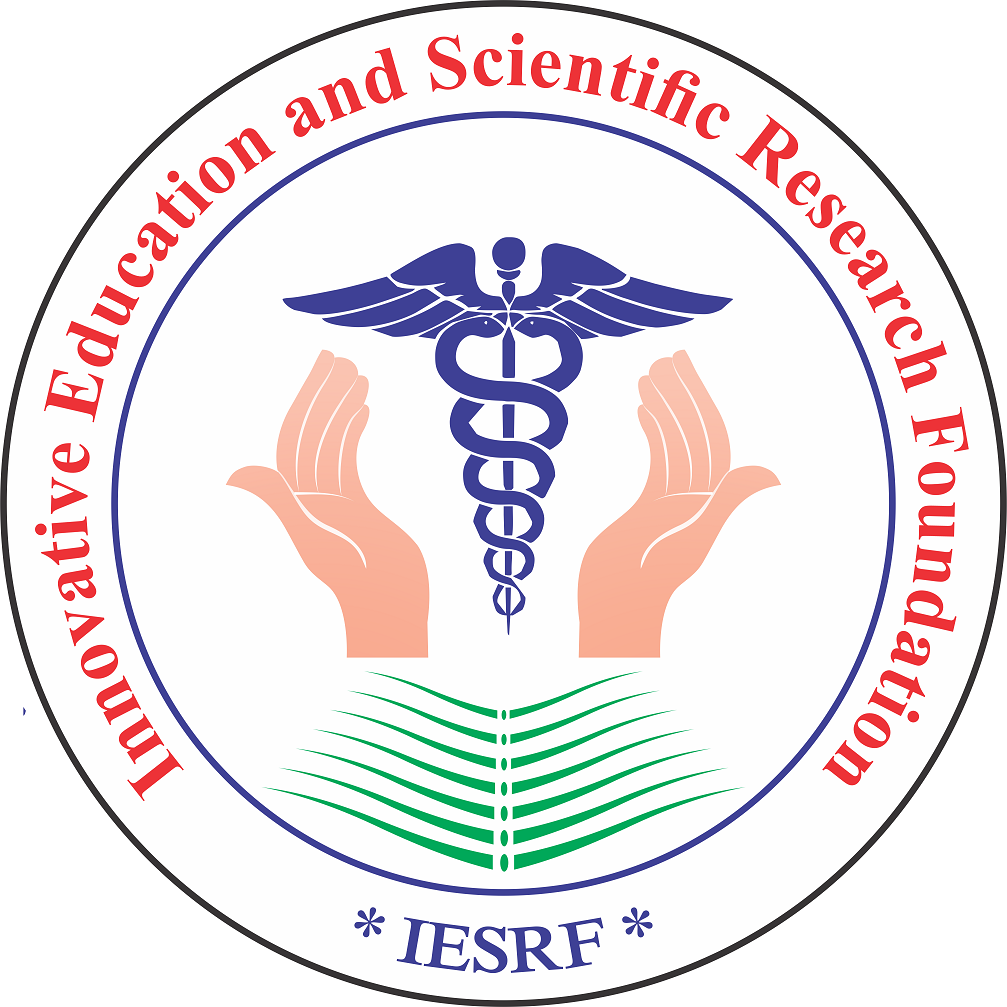- Visibility 1.7k Views
- Downloads 386 Downloads
- Permissions
- DOI 10.18231/j.jpmhh.2024.001
-
CrossMark
- Citation
Abstract
Wheatgrass, or 'green blood,' provides oxygen to tissues and antioxidant enzymes, preventing oxidative DNA damage. The food is a natural remedy with high nutrient density, potentially boosting the immune system and providing pre-shielded protection. Research has also investigated its potential to inhibit cervical cancer cell growth. Wheatgrass juices contain high chlorophyll concentrations, as summer grass has more pigments. They are a popular health food with antioxidant properties and potential cancer-fighting properties. Wheatgrass juices are also a natural remedy with anti-inflammatory, detoxifying, and anti-arthritis benefits. This superfood, overall, contributes in many ways to Indian traditional knowledge systems comprising ayurveda, naturopathy, yoga, and nutrition, playing a significant role in healing processes and human values.
Introduction
Wheatgrass leaves contain a high chlorophyll concentration, with juice containing up to 0.60% total chlorophyll. Summer grass has more total chlorophyll pigments than winter grass, resulting from the specific ratio between chlorophyll production and light intensity. The ratio of chlorophyll types is responsible for the green hue of wheatgrass juice. The composition and physiochemical properties of wheatgrass juices exhibit considerable variation due to factors such as species, genetics, agronomic circumstances, pH, light intensity, temperature, and mineral uptake by the plant.[1], [2] Wheatgrass juices exhibit elevated quantities of chlorophylls, carotenoids, polyphenols, catalase activity, and color compared to winter juices. However, they contain lower levels of dry matter and extract. Wheatgrass juice is a well-liked health food that contains distinct phenolic components, such as flavonoids and phenolic acids. Nevertheless, due to its limited durability, it is commonly consumed in its fresh state.[1], [2], [3], [4], [5] Wheatgrass, also called ‘green blood,’ is a youthful grass containing a significant amount of chlorophyll and is like hemoglobin in humans. This resemblance allows it to provide a substantial amount of oxygen to tissues. The substance includes antioxidant enzymes, such as superoxide dismutase and cytochrome oxidase, and can prevent oxidative DNA damage. Research has been conducted on the alcoholic extract of wheatgrass to investigate its potential to inhibit the growth of cervical cancer cells. However, the present emphasis is on developing medications explicitly targeting cancer cells.[6] Wheatgrass, a natural remedy with high nutrient density, may be an ideal choice for the pandemic (for example, the COVID-19 pandemic) due to its potential to boost the immune system. It contains bioflavonoids, vitamins, iron, calcium, and magnesium, which provide anti-inflammatory, detoxifying, anti-arthritis, and anti-ulcer benefits. This food, also called super food, is simple and affordable to cultivate at home, making it easy to acquire health and combat health-related issues while providing pre-shielded protection against communicable diseases. [7] Indian traditional knowledge systems, or indigenous systems, have evolved over centuries due to diverse habits and lifestyles. These systems are increasingly popular due to their ancient and current knowledge, innovations, benefits, and beliefs. Based on natural treatment protocols and significant research, India is home to conventional therapies like ayurveda, naturopathy, yoga, and nutrition. India's diverse vegetables and fruits contribute to healing processes and human values.[8] In these diverse cultures, wheatgrass, a young grass from Triticum aestivum, has been shown to have numerous health benefits, including cancer prevention and treatment. Its compositions vary depending on production processes and growing conditions. Clinical trials suggest it may induce synergistic benefits to chemotherapy, attenuate side effects, and benefit various diseases. However, no adverse events have been reported due to methodological issues and small trials.[9]
Conclusion
Wheatgrass, called ‘green blood,’ contains bioflavonoids, vitamins, iron, calcium, and magnesium. They provide anti-inflammatory, detoxifying, anti-arthritis, anti-ulcer, and detoxifying benefits. This affordable food is a superfood with multipurpose therapeutic and nutritional use.
Conflict of Interest
None.
Dr. Swapan Banerjee, Senior Lecturer, Vivekananda Mission Seva Pratisthan, West Bengal.
References
- Skoczylas A, Korus M, Tabaszewska K, Gędoś E. Szczepańska Evaluation of the quality of fresh and frozen wheatgrass juices depending on the time of grass harvest. J Food Proces Preser. 2018;42(1). [Google Scholar]
- Kaur N, Singh B, Kaur A, Yadav M, Singh N, Ahlawat A. Effect of growing conditions on proximate, mineral, amino acid, phenolic composition, and antioxidant properties of wheatgrass from different wheat (Triticum aestivum L.) varieties. . Food Chem. 2021;341(1). [Google Scholar] [Crossref]
- Virdi A, Singh N, Bains K. Kaur Effect of photoperiod and growth media on yield and antioxidant properties of wheatgrass juice of Indian wheat varieties. J Food Sci Technol. 2021;58(8):3019-29. [Google Scholar]
- Choi M, Lee M, Yang S, Shin H. Jeon Hydrophobic fractions of Triticum aestivum L. Extracts contain polyphenols and alleviate inflammation by regulating nuclear factor-kappa B. Biotech Biopro Eng. 2021;26(1):93-106. [Google Scholar]
- Thakur N, Dhaliwal H, V. Sharm Qualitative and quantitative RP-HPLC-PDA method of analysis of polyphenols in lyophilized wheat seedling juice powder. Int J Emer Technol. 2021;11(2):36-43. [Google Scholar]
- Gore R, Palaskar S, Bartake A. Wheatgrass: Green Blood can Help to Fight Cancer. J Clin Diagn Res. 2017;11(6):ZC40-2. [Google Scholar]
- Hassan N, Siddique M. Wheat Grass (Triticum aestivum L.) Benefits Health in a Pandemic Scenario. J Res Appl Sci Biotechnol. 2022;1(1):24-33. [Google Scholar]
- Banerjee S. The Essence of Indian Indigenous Knowledge in the perspective of Ayurveda , Nutrition, and Yoga. Res Rev Biotechnol Biosci . 2020;7(2):20-7. [Google Scholar]
- Bar-Sela G, Cohen M, Ben-Arye E, Epelbaum R. The Medical Use of Wheatgrass: Review of the Gap Between Basic and Clinical Applications. Mini Rev Med Chem. 2015;15(12):1002-10. [Google Scholar]
How to Cite This Article
Vancouver
Banerjee S. Health and nutritional benefits of wheatgrass [Internet]. J Prev Med Holist Health. 2024 [cited 2025 Oct 28];10(1):1-2. Available from: https://doi.org/10.18231/j.jpmhh.2024.001
APA
Banerjee, S. (2024). Health and nutritional benefits of wheatgrass. J Prev Med Holist Health, 10(1), 1-2. https://doi.org/10.18231/j.jpmhh.2024.001
MLA
Banerjee, Swapan. "Health and nutritional benefits of wheatgrass." J Prev Med Holist Health, vol. 10, no. 1, 2024, pp. 1-2. https://doi.org/10.18231/j.jpmhh.2024.001
Chicago
Banerjee, S.. "Health and nutritional benefits of wheatgrass." J Prev Med Holist Health 10, no. 1 (2024): 1-2. https://doi.org/10.18231/j.jpmhh.2024.001
